All issues

Volume 3 (1954 - 1955・・・
- Issue 10 Pages 3-
- Issue 9 Pages 3-
- Issue 4 Pages 3-
- Issue 3 Pages 3-
Volume 3, Issue 9
Displaying 1-8 of 8 articles from this issue
- |<
- <
- 1
- >
- >|
-
[in Japanese], [in Japanese]1954 Volume 3 Issue 9 Pages 3-10
Published: 1954
Released on J-STAGE: June 28, 2010
JOURNAL FREE ACCESSDownload PDF (1164K) -
[in Japanese]1954 Volume 3 Issue 9 Pages 11-14
Published: 1954
Released on J-STAGE: June 28, 2010
JOURNAL FREE ACCESSDownload PDF (550K) -
I. Theoretical StudyHiroshi IIJIMA1954 Volume 3 Issue 9 Pages 15-20
Published: 1954
Released on J-STAGE: June 28, 2010
JOURNAL FREE ACCESSIn quantitative spectrographic analysis, the normal density, D=log (opacity) as measured quantity, has been most widely used, but recently so-called Seidel-density, W=log (opacity-1), or so-called P-density, P= (D+W) /2 has often been used. But it has not been evidently confirmed that in which case the density W or P should be used, and in which points W or P is more favourable than the normal density. The author has made a theoretical study on the working-curve of the internal-standard method and compared the working-curve in Seidelscale with that in the normal-scale from the point of view of the errors.
The results of this study are summarized as follows:
1. The slope of working curve in Seidel-scale is steeper than that in normal scale.
2. In practical concentration range, errors are sufficiently eliminated in the internal standard method, using the normal scale, but in this range it does not necessarily follow that the errors is sufficiently eliminated in Seidel-scale.
3. In low concentration range sometimes Seidel-scale is more favourable but sometimes is not. Generally speaking, Seidel-scale is more favourable in case of the slope of working curve in this scale, being extremely steeper than that in normal scale.View full abstractDownload PDF (760K) -
II. Experiment: Quantitative Spectrographic Analysis of Elements in Steel at the Low Concentration in Seidel-scaleHiroshi IIJMA1954 Volume 3 Issue 9 Pages 21-25
Published: 1954
Released on J-STAGE: June 28, 2010
JOURNAL FREE ACCESSIn order to examine the results of the theoretical study in the first report, the author, applying Seidel-scale, has made an experimental study on the quantitative spectrographic analysis of elements in steels at low concentration. The results of this study are summarized as follows.
1. In low concentration range sometimes calibration by Seidel-scale is more favourable but sometimes is not. Calibration by Seidel-scale is more favourable when the slope of the working curve in this scale is extremely steeper than in normal scale.
2. It has been experimentally confirmed that the results of theoretical study is right.
3. In the analysis of low concentration, the application of high energy source is rather preferable than the application of Seidel-scale.View full abstractDownload PDF (715K) -
Shigeru OTSUKA1954 Volume 3 Issue 9 Pages 26-31
Published: 1954
Released on J-STAGE: June 28, 2010
JOURNAL FREE ACCESSStudy was made on the way of measuring quantity of nickel, plated on the iron sheet so as to use for anodes of receiving tubes. The measurement was made by means of a medium type quartz spectrograph manufactured by Shimadzu Works.
Samples were dissolved into solvent, then the solutions were permeated into carbon rods to use as electrode. It was revealed that very quick and accurate measurement of the thickness of plating is possible, by proper adjustment of densities'of solvent and solution, duration of permeation, and condition of photographing. Using this method, we can easily see interesting distribution of nickel plate thickness on iron sheet.View full abstractDownload PDF (809K) -
(I) Construction of a Wadsworth Littrow Type Infrared Spectrometer using a GalvanometerKeiei KUDO1954 Volume 3 Issue 9 Pages 32-35
Published: 1954
Released on J-STAGE: June 28, 2010
JOURNAL FREE ACCESSA Wadsworth Littrow type infrared spectrometer using a galvanometer has been built. Prism is a sodium chloride of surace area IIX 8cm and angle 65°. Detector is the thermo-couple which has a long time constant and sensitivity of 3 μV/μW at 760 mmHg.
Wave length of recording spectrum is linear, and slit is automatically opened by a slit cam. As the sensitivity of a galvanometer is 5×10-8 volt, slit must be considerably wide, so the resolution of the spectrometer is not good, nevertheless the 10μ band of ammonia was detected distinctly.View full abstractDownload PDF (600K) -
(II) Construction of a Littrow Type Infrared Spectrometer using a GalvanometerKeiei KUDO1954 Volume 3 Issue 9 Pages 36-41
Published: 1954
Released on J-STAGE: June 28, 2010
JOURNAL FREE ACCESSIn previous year, a Wadsworth Littrow type infrared spectrometer using a galvanometer was built, In the spectrometer, a prism was set at minimum deviation, the prism and Wads-worth mirror were rotated simultaneously. In this time, a Littrow type spectrometer which is not a minimum deviation type has been built, and its resolution power has been examined theoretically and experimentally.View full abstractDownload PDF (3960K) -
1954 Volume 3 Issue 9 Pages 48
Published: 1954
Released on J-STAGE: February 23, 2011
JOURNAL FREE ACCESSDownload PDF (142K)
- |<
- <
- 1
- >
- >|